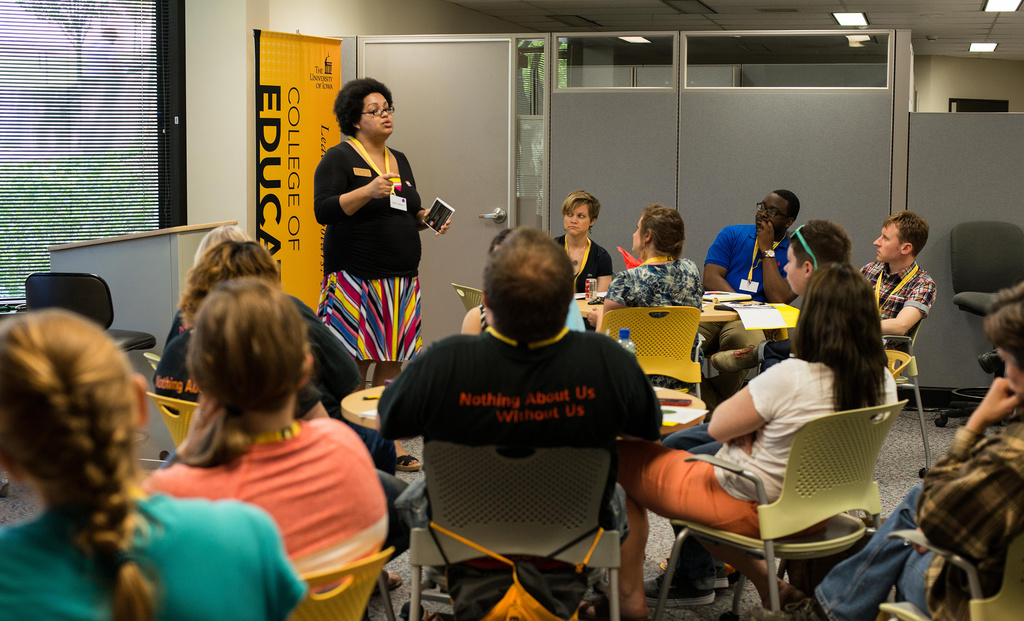
Jake says he always looks for a rainbow or pink triangle when he enters an office to let him know that he’s safe.
Now a college student, Jake was a teen in Iowa’s foster care system when he came out as gay and was part of a panel of Lesbian, Gay, Bisexual, Transgender, and Queer/Questioning (LGBTQ) youth speaking at Iowa’s first statewide Summit on LGBTQ Homeless and Out-of-Home Youth. The event took place Wednesday and was hosted by the University of Iowa College of Education’s Teacher Leader Center, the UI’s Chief Diversity Office, Four Oaks, and Iowa Kidsnet.
The pink triangle and rainbow are symbols used to demonstrate that someone is accepting of lesbian, gay, bisexual, transgender, or queer people, or those who do not identify as heterosexual and gender conforming.
Jake says he appreciates the chance to talk about his experiences and was pleased to see a room full of professionals interested in his story.
“Having people care feels good,” he says.
Almost 50 professionals from across the state who serve the LGBTQ youth population, as well as homeless youth and those in foster care, attended the conference.
Teacher Leader Center director William Coghill-Behrends says the event grew out of the center’s year-long focus on bullying last year, and a growing need throughout the state to address the dramatic increase in the number of LGBTQ-identified youth in care.
“We realized that this is a population in crisis and that there are a lot of questions and not a lot of answers,” he says. “The purpose of this summit is to determine the needs of this population and the ways we can pull together as a system to support students who are truly in need.”
One challenge in addressing these young people’s needs is that statistics are not collected in Iowa to clearly define and track the population.
According to Penny McGee of Iowa Kidsnet, national studies suggest that LGBTQ youth account for between 10 and 18 percent of youth in out-of-home care settings such as foster care and group homes. Of youth identifying as LGBTQ in out-of-home care, only 56 percent reported feeling safe in their placement, McGee says. Within their first year out of the system, she reports that 36 percent of LGBTQ-identified youth reported being homeless at least once.
In Fiscal Year 2012, there were 13,362 youth in out-of-home care in Iowa, which suggests that there were more than 1,300 LGBTQ youth in the system if national averages hold true in our state.
Coghill-Behrends says the summit is the first step at developing a systems approach to providing safe intake, education, and treatment for LGBTQ youth, but that is a complicated task.
“These kids most often have co-occurring issues. They’re not in the system because they’re queer, but because their families are in crisis or they have substance abuse issues, or are missing school. Then this identity issue co-occurs,” he says. “I’m excited that we can help the state in this regard to identify the issues and develop a working list of action steps we need to take.”
At the end of the summit the group planned to convene in the fall to develop action steps and start creating policy to better support LGBTQ-identified youth.
“While we pride ourselves in this state on many accomplishments in the area of diversity and equity, we know that this work always continues,” Coghill-Behrends says.